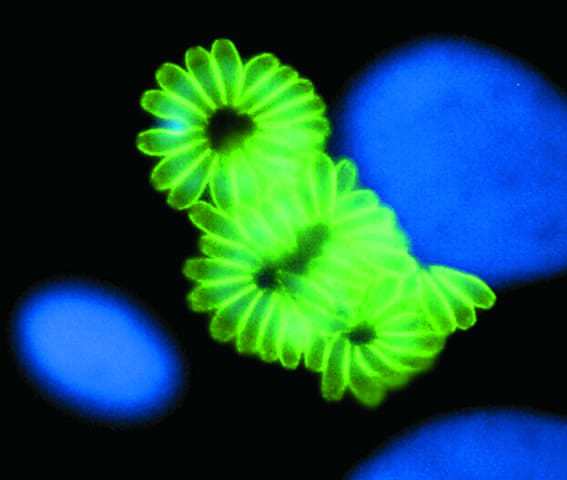Sarcocystis Neurona Genome Project Almost Complete

Prior to the S. neurona genome project, Howe had been conducting preliminary sequencing studies in his lab funded by a gift from Thoroughbred breeders John and Jerry Amerman. In 2009 he received a $500,000 grant from the USDA-CSREES (U.S. Department of Agriculture-Cooperative State Research and Extension Service) competitive grants for his research.
S. neurona causes equine protozoal myeloencephalitis (EPM), which is one of the most important and commonly diagnosed neurologic diseases in the United States. EPM has a tremendous ongoing impact on the equine industry and equine health due to the considerable cost of diagnosis and care to fully recover an affected horse. Some horses might never recover entirely. Clinical signs vary from horse to horse but include loss of coordination, muscle atrophy, sore back, stumbling, locking of the stifle joint, and weakness.
The parasite’s life cycle initially begins in the definitive host, which is the opossum that passes the S. neurona oocysts and sporocysts in its feces. To complete its life cycle, this parasite needs two hosts, one definitive (final) and one intermediate
Create a free account with TheHorse.com to view this content.
TheHorse.com is home to thousands of free articles about horse health care. In order to access some of our exclusive free content, you must be signed into TheHorse.com.
Start your free account today!
Already have an account?
and continue reading.
Written by:
University of Kentucky College of Agriculture, Food, and Environment
Related Articles
Stay on top of the most recent Horse Health news with















